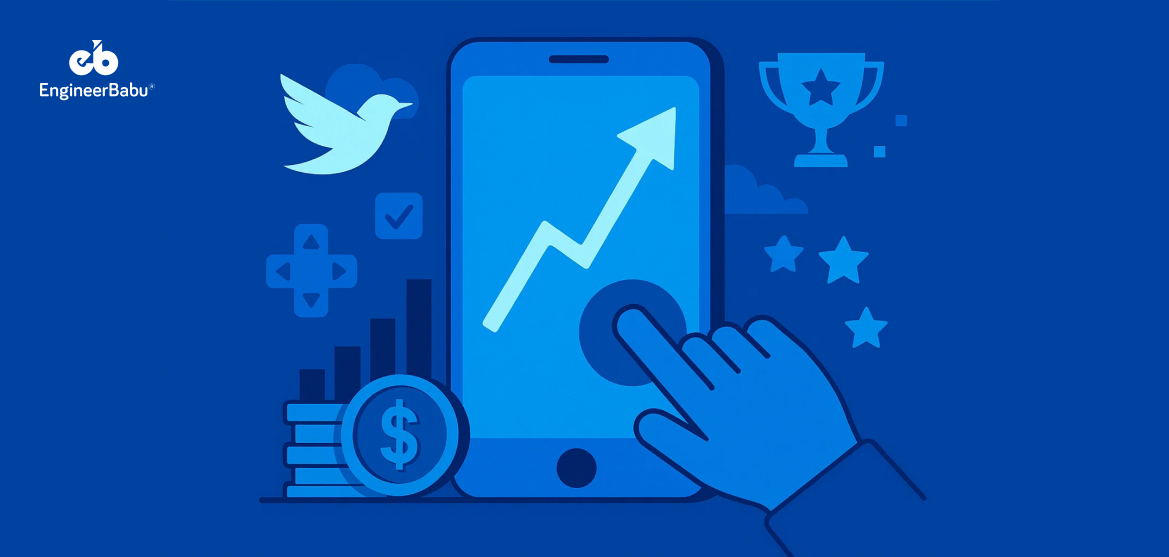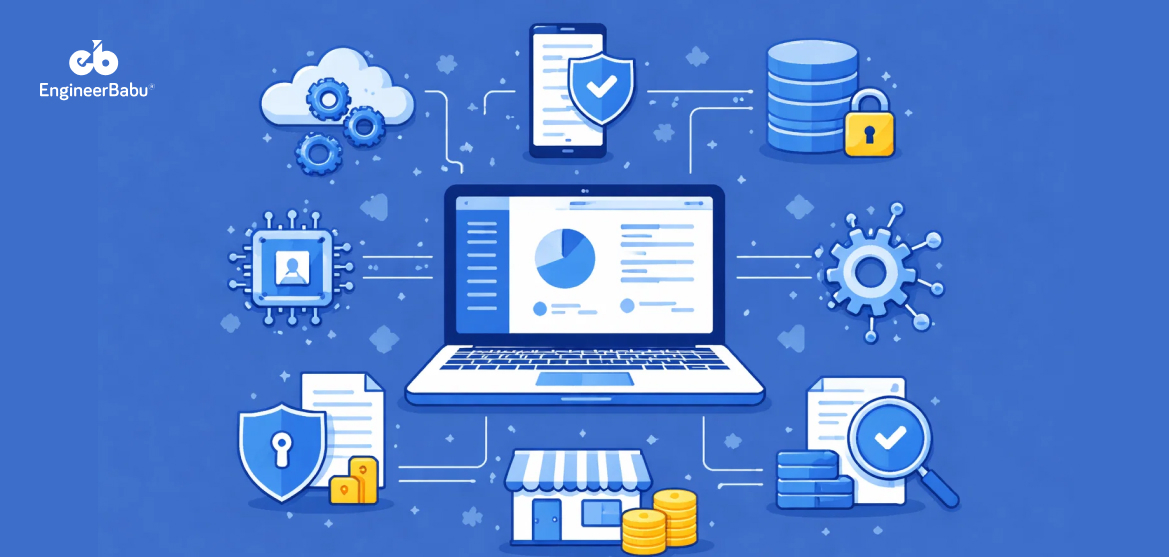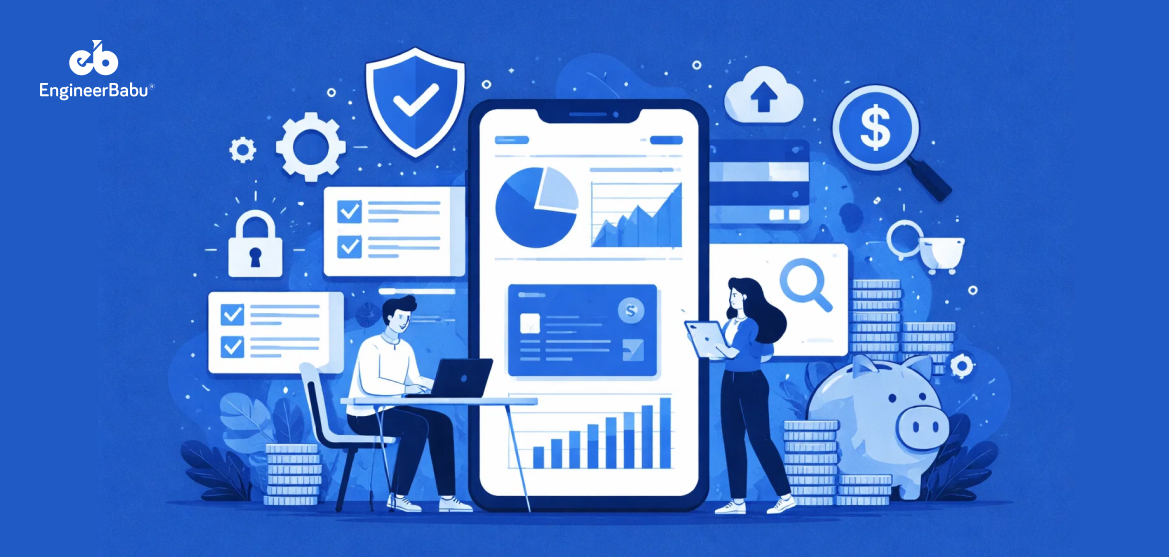What happens when a trading app starts looking and feeling a lot like a mobile game? When Robinhood launched, it didn’t just offer commission-free trades. As a company, Robinhood reimagined investing as a fast, engaging experience by employing gamification strategies in stock trading, which drew both users and regulatory scrutiny.
And it worked, by April 2025, Robinhood had 25.9 million funded customer accounts), fueled largely by its gamified approach to user engagement. The trading platform’s user-friendly design and digital engagement features contributed significantly to this growth. This level of engagement helped it redefine the retail investing playbook but also sparked debates about the ethics of gamification in finance.
So, in this blog, we’ll explore how gamification helped Robinhood grow so rapidly and where the model proved problematic. Whether you’re building an investment platform, mixing trading tools, or designing engagement flows, these lessons are more than UI tricks, they’re about shaping behavior with purpose.
What Is Gamification in Finance?
At its core, gamification is the use of game-like elements, think points, progress bars, streaks, and rewards in non-game environments. In fintech, this approach is often used to drive engagement, reduce friction, and nudge users toward specific behaviors.
When applied to trading platforms, gamification in stock trading can look like:
- Animated confetti after a successful trade,
- Badges for hitting investment milestones, or
- Instant gratification through daily login rewards and push alerts.
These features are designed to make trading feel exciting, even addictive, borrowing heavily from techniques used in mobile gaming and social media apps.
But unlike games, trading involves real money and real risk. That’s where the controversy begins. While gamification can simplify complex financial concepts and encourage first-time investors, it can also lead to overconfidence, impulsive decisions, and a misunderstanding of risk. This is why robust supervisory controls are essential to ensure that gamification features are implemented responsibly and do not compromise user safety or regulatory compliance.
So, in the next section, we’ll look at how Robinhood turned these principles into a product that redefined modern trading and why it wasn’t all celebration and success.
Robinhood’s Gamification Playbook
Gamification in stock trading is about influencing decision-making through subtle cues and frictionless flows. Robinhood became a standout case by embedding these mechanics into every touchpoint, shaping how millions interacted with markets. The company’s historical practices in user engagement, including its supervisory controls and engagement strategies, have been subject to regulatory review, prompting Robinhood to improve these practices to better comply with current regulations and protect investors.
Instant Gratification Through UX
Robinhood’s onboarding was built for momentum. New users could sign up, link a bank account, and make their first trade all within minutes. That tight loop of instant access reduced friction and gave users immediate gratification. Moreover, it encouraged interaction before reflection, a hallmark of successful gamification in stock trading platforms. Robinhood’s onboarding process also played a role in ensuring platform stability during periods of high user activity, as the company invested in supervising its technology, system controls, and cybersecurity policies to support a robust and secure experience.
Confetti, Swipes, and Micro-Rewards
Completing a trade triggered celebratory animations like digital confetti, reinforcing the user’s action with visual rewards. Swiping to place trades added a gamified gesture, making execution feel playful. These subtle UX flourishes didn’t just enhance usability, they turned financial transactions into emotionally satisfying moments that drove repeat behavior across sessions.
Free Stock and Referral Mechanics
Robinhood’s “free stock” referral scheme gave users random shares as a reward for inviting friends, mirroring a loot-box dynamic. The randomness and potential value variation triggered curiosity and reward anticipation. It wasn’t just an acquisition tactic, it was a behavioral hook designed to keep users talking, sharing, and checking back in.
Trending Stocks and FOMO Nudges
Robinhood’s interface surfaced trending stocks and top movers to create social signals within a solo user experience. These nudges, paired with time-sensitive push notifications, fueled a sense of urgency. The design encouraged fast decisions, not long-term thinking, shaping user behavior around momentum rather than market fundamentals.
Minimalist Design, Maximum Momentum
Instead of overwhelming users with research dashboards or technical charts, Robinhood used a stripped-down, mobile-first layout. Clean visuals, large call-to-actions, and swipeable navigation kept users in motion. It was investing without cognitive overload, deliberately designed to keep users focused on action rather than contemplation or caution.
The Impact of Gamification on User Behavior
The rise of gamification in stock trading apps has fundamentally changed how users interact with the stock market and make investment decisions. By introducing game-like elements—such as digital confetti, push notifications, and free stock rewards—platforms like Robinhood have made trading stocks feel more accessible and exciting, especially for new users and inexperienced investors. This easy access and sense of instant gratification have helped attract millions of new customers, boosting user engagement and making the investment experience feel less intimidating.
However, the same gamification strategies that entice continuous engagement can also negatively influence customer behavior. Features designed to boost engagement, like celebratory imagery tied to each trade or notifications about trending stocks, can encourage frequent trading and impulsive financial decisions. For many novice investors, these digital engagement practices may overshadow the importance of a thoughtful investment strategy and a clear understanding of risk. The thrill of commission free trades and the allure of free stock rewards can sometimes make investing feel like a lottery ticket, rather than a serious financial decision.
The Massachusetts Supreme Judicial Court’s recent support of the state’s fiduciary rule underscores the need for trading platforms to prioritize investor protection over aggressive tactics. Robinhood’s $7.5 million settlement with the state, following charges that its gamified investing approach and user interface encouraged risky trading behaviors, serves as a cautionary tale for the industry. Regulatory bodies, including the Exchange Commission, are increasingly scrutinizing how digital engagement practices and game-like elements can lead to negatively influenced customer behavior, especially among inexperienced investors.
To reflect Robinhood today and the broader industry, investment platforms must find a balance between engaging users and guiding them toward responsible investing. This means designing features that not only attract and retain customers but also promote financial literacy, help users set and achieve investment goals, and encourage informed decision making. For example, integrating educational resources, risk assessments, and personalized investment recommendations can help guide users toward healthier investment strategies, rather than simply enticing them to trade more often.
Ultimately, the success of gamification in stock trading depends on a deep understanding of user behavior and a commitment to ethical engagement practices. By prioritizing transparency, user protection, and compliance with regulations like the Massachusetts fiduciary rule, trading apps can create a positive environment that supports both user engagement and long-term financial well-being. As the investment platform landscape continues to evolve, companies must remain vigilant—ensuring their digital engagement practices empower investors, rather than expose them to unnecessary risk. This approach not only builds trust but also ensures the stability and success of the platform in a rapidly changing market.
What Worked and What Backfired
Gamification helped Robinhood create habits, scale fast, and attract a younger generation of investors. But not all engagement is healthy, especially when money and risk are involved. Here’s a breakdown of what their approach got right and where it drew criticism.
During periods of regulatory scrutiny, Robinhood’s deputy general counsel, Lucas Moskowitz, played a key role in overseeing compliance and regulatory responses, highlighting the company’s efforts to strengthen supervisory controls and address legal challenges.
What Gamification Got Right
Robinhood lowered the psychological and technical barriers to stock trading. By simplifying the UI and rewarding key actions, it encouraged more people, especially first-time investors, to engage with markets.
For many, gamification in stock trading made finance feel less intimidating and more accessible. Thus, driving rapid user acquisition and retention in a saturated space.
Where It Crossed the Line
The same design features that improved access also increased impulsivity. Confetti, instant trade confirmations, and swipe-to-buy mechanics reduced the friction that typically prompts reflection.
Critics argued that these elements encouraged overtrading and risk-blind behavior, especially among inexperienced users who lacked financial literacy.
The GameStop Fallout and Regulatory Pressure
Robinhood’s role in the GameStop frenzy triggered regulatory scrutiny. Following the incident, Robinhood entered into a consent order with regulators, which imposed specific compliance requirements and restrictions to resolve allegations of securities violations related to its gamification practices. The app’s gamified interface was cited as a factor in users’ aggressive trading behavior. This event became a turning point and prompted public hearings and renewed debate over ethical design in finance. Regulatory actions also referenced the state’s fiduciary rule, emphasizing investor protection and highlighting how state-specific fiduciary standards influenced legal actions against Robinhood, in contrast to broader federal regulations.
User Trust and Brand Impact
Following trading halts during market volatility, Robinhood faced a wave of backlash. Users questioned whether the platform’s loyalty was to them or its institutional partners.
While gamification created engagement, it couldn’t rebuild trust once transparency was in doubt, a reminder that long-term loyalty depends on more than just clever UX.
Ethical Considerations in Fintech Gamification
Gamification is a powerful tool but in fintech, its consequences extend far beyond screen time. When real money is involved, the line between guiding users and manipulating them becomes dangerously thin. Designing for behavior in this context requires responsibility, not just creativity.
Encouragement vs Manipulation
There’s a clear difference between helping users engage and nudging them toward risks they may not understand. Celebrating every trade, for example, might feel rewarding but when paired with constant “hot stock” alerts or FOMO notifications, it can shift from education to exploitation. Therefore, the challenge is balancing nudges with informed consent.
The Role of Regulation
Financial regulators are beginning to take note. In markets like the U.S., U.K., and Australia, authorities have started examining how gamification affects investor behavior, especially among retail users. The concern isn’t gamification itself, but whether it’s being used to encourage risky habits rather than support long-term financial well-being. Notably, the Massachusetts Supreme Judicial Court recently overturned a lower court decision in a case involving Robinhood, impacting the company’s regulatory challenges and shaping how state securities laws are enforced.
Designing Guardrails That Respect the User
Ethical gamification doesn’t mean removing engagement, it means adding friction in the right places. Educational overlays before high-risk trades, default cooldown timers, and visual warnings for leveraged products can act as safeguards. These features slow users down just enough to prompt reflection without breaking the experience.
Prioritizing User-Centric Product Decisions
UI UX Designers should work on fintech designs that reflect users’ financial maturity, goals, and capacity for risk. That means avoiding one-size-fits-all gamification. A day-trader app may justify faster workflows, but an investment platform targeting first-timers should optimize for clarity, not speed.
In short, when done thoughtfully and with the right guardrails, gamification in stock trading can be an incredibly effective way to improve engagement and user retention. The key is not avoiding gamification altogether, but applying it with intention, transparency, and respect for the user’s financial journey.
How to Integrate Gamification in Stock Trading
Done right, gamification can elevate user experience, retention, and financial literacy. But in a regulated environment like trading, execution matters. Here’s how product and tech teams can embed gamification in a way that feels empowering, not exploitative.
Define Behavioral Outcomes Before You Build
Every gamified element should map to a specific behavioral goal. Are you improving onboarding completion, increasing repeat logins, or educating users on risk?
Start with the outcome and reverse-engineer the experience. Without this clarity, gamification risks becoming cosmetic noise rather than something users find meaningful or habit-forming.
Use Rewards That Reinforce Smart Behavior
Reward systems shouldn’t just celebrate action, they should reinforce good action. Instead of triggering animations after any trade, highlight thoughtful actions like diversification or reaching investment goals.
As a result, this approach promotes positive habits. Moreover, for a solid backend foundation, consider partnering with experts in custom software development to build tailored reward logic.
Add Friction Where It Matters Most
Not all flows should be gamified. High-risk actions like margin trading or options should introduce intentional friction like a confirmation screen, a time delay, or a short learning prompt.
These pause points help users reflect before acting and reduce the likelihood of emotion-driven trading without stalling user experience.
Keep Transparency and User Control Central
Gamification should never feel manipulative. Let users control notification settings, disable badges, or opt out of reward loops entirely. This transparency builds long-term trust.
It also improves retention by respecting user autonomy, something essential for financial tools that aim to serve both beginner and seasoned investors responsibly.
Work With Fintech-Savvy Developers
Gamifying a trading app is more than just about UX, it involves compliance, behavioral science, and performance under load. To get it right, it’s smart to who understand how to balance engagement with regulation. With the right team, you can move fast, without cutting corners that could cost you later.
Conclusion
Gamification is not inherently good or bad, it’s a tool. In the hands of thoughtful fintech product teams, it can simplify complex decisions, improve user experience, and build long-term financial habits. But when misused, it risks turning risk into entertainment.
Robinhood proved that gamification in stock trading can drive mass adoption, but it also revealed the ethical pitfalls of rewarding engagement without education.
Equally important is the need for robust cybersecurity policies. Robinhood’s experience with a data breach, where an unauthorized third party gained access to customer data through a voice phishing scam, underscores the critical importance of safeguarding user information and continuously improving security measures.
The future of trading platforms lies in responsible design: using gamification to inform, not mislead. For those building fintech apps, the challenge is clear, prioritize trust without losing momentum.
Is gamification in stock trading legal?
Yes, gamification in stock trading is legal when implemented responsibly. However, financial regulators closely monitor designs that encourage excessive risk-taking or obscure potential losses. Transparency, consent, and alignment with compliance standards are critical to staying on the right side of the law.
What are some common gamification techniques used in trading apps?
Progress bars, achievement badges, streak counters, celebration animations, and randomized referral rewards are widely used. While these techniques can boost engagement, they must be tied to meaningful outcomes to avoid promoting reckless behavior.
Why did Robinhood face criticism for its gamified design?
Robinhood was scrutinized for design elements like swipe-to-trade actions and celebratory confetti that encouraged rapid trading. These features were seen as promoting risky behavior and reducing the gravity of financial decisions, especially among inexperienced users.
Can gamification help improve financial literacy?
When used to guide users through investment basics, savings milestones, or portfolio diversification, gamification can improve retention and understanding. The key is to align incentives with education, not speculation or speed.
How can I implement gamification responsibly in my trading app?
Start by defining specific behaviors you want to encourage, such as learning, consistency, or goal setting. Build guardrails for high-risk flows, avoid manipulating urgency, and partner with fintech-savvy developers who understand how to blend ethics and engagement in product design.




